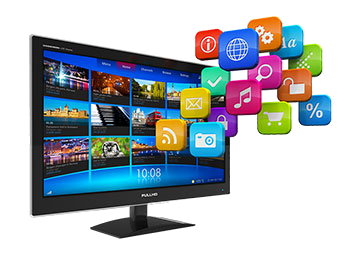EBU tech chief calls for hybrid future
March 8, 2023
By Colin Mann

Antonio Arcidiacono, Director of Technology & Innovation at the European Broadcasting Union (EBU) has suggested that broadcasters use both broadcast and online technologies in a sustainable and smart way to ensure that Public Service Media (PSM) organisations keep control over future distribution in their own hands.
Writing in the EBU’s tech-i magazine, Arcidiacono says that it is not difficult, these days, to find voices that advocate accelerating towards a world without broadcast. “There are many who believe, for different reasons, that we will soon be able to meet all our needs for entertainment, information and education, as well as emergency communications, via online delivery. In this world, digital terrestrial television joins the dinosaurs and satellites address only B2B datacom needs. Such a hypothesis is based on a presumption that broadcast is only good for distribution of traditional linear channels but cannot support new and future media services. Is this accurate,” he asks.
“At the same time, experiments with new media formats continue apace, moving towards providing more immersive experiences,” he notes. “The FIFA World Cup, for example, provided an opportunity to test the state of the art in free- viewpoint video, sometimes called ‘freeview’ or volumetric video, a new pillar of the spatial media universe where public service media organisations will be expected to at least match the offer of their commercial competitors. The end user, on a 2D display, can select their point of view (and the related listening experience) freely moving in space, and backward in time, becoming the director of their own individual experience.”
According to Arcidiacono, free-viewpoint experience implies a set of technical realities that bring us back to the question of distribution. “Volumetric video captured in a stadium can be encoded at about 2 Gbps; distributing a single point-of-view on demand will require a guaranteed bandwidth of 50–60 Mbps available to an individual user to ensure a consistent user experience. Could this kind of service be made available to millions of users at the same time and, if so, how can this be achieved,” he wonders.
“Distribution over a large area can be envisaged using a fibre-to- the-home connection, where available, but becomes unsustainable, technically and/or financially, when using a DSL or a mobile network infrastructure,” he suggests.
“Furthermore, telecom operators, striving to be economically efficient, dimension their network for average usage and oversubscribe the network capacity. As pure unicast networks, contrary to broadcast, do not scale well for very large concurrent audiences, this is a recipe for network congestion at the time of peak demand, which is the case with popular live events,” he warns.
Arcidiacono suggests that solutions will most likely come from combining broadcast and broadband: satellite broadcasting can deliver the 2 Gbps live content to network edges, including homes, with collaborative unicast connectivity provided by terrestrial wireless or wired means. “This will leverage the scalability of broadcast and the flexibility of unicast, resulting in a sustainable solution able to cover the entire population with a ubiquitous guaranteed quality of service,” he advises, adding that solutions combining satellite edgecasting and unicast infrastructures are being developed in the 5G-EMERGE project.
“The same content could be of interest for people locally attending live events,” he says. “We have already seen how sports fans embrace a relatively low-tech experience like hearing the referee’s decisions in an earpiece; imagine the excitement for a fan who can select their own viewing angle regardless of where they are seated in the stadium.”
“Again here, the combination of a broadcast and unicast solution exploiting a local wireless broadcast signal would be technically and economically efficient, leveraging the implementation of 5G broadcast/ multicast technologies at higher frequencies in a relatively small area,” he notes. “This is also a tangible example of blending physical and digital worlds in what we can call a ‘phygital’ experience: the social element goes hand in hand with the augmented digital reality, using technology to connect the digital and physical worlds.”
“Enabling and cultivating shared experiences while providing for individual needs is a key task of PSM,” he states. “Shared experience is based on common elements experienced by everybody and individual elements that are unique to each person. New media formats will necessarily need to include both the common and the personalised components.”
“For too long broadcasting and online have been considered in opposition, and not complementary. The option of combining broadcasting and online must be kept to the fore; we must use both broadcast and online technologies in a sustainable and smart way to ensure that PSM organisations keep control over future distribution in their own hands,” he concludes.
